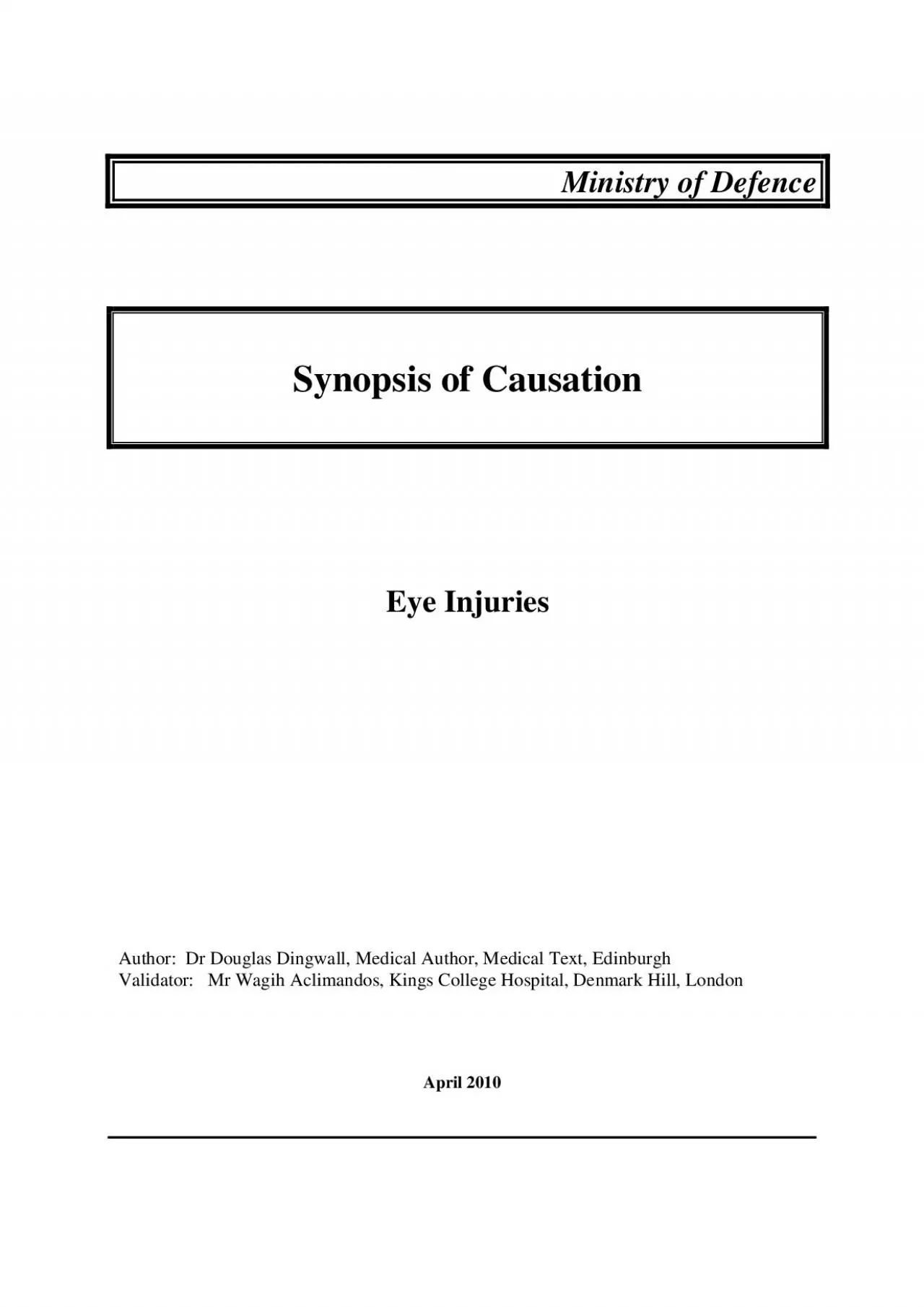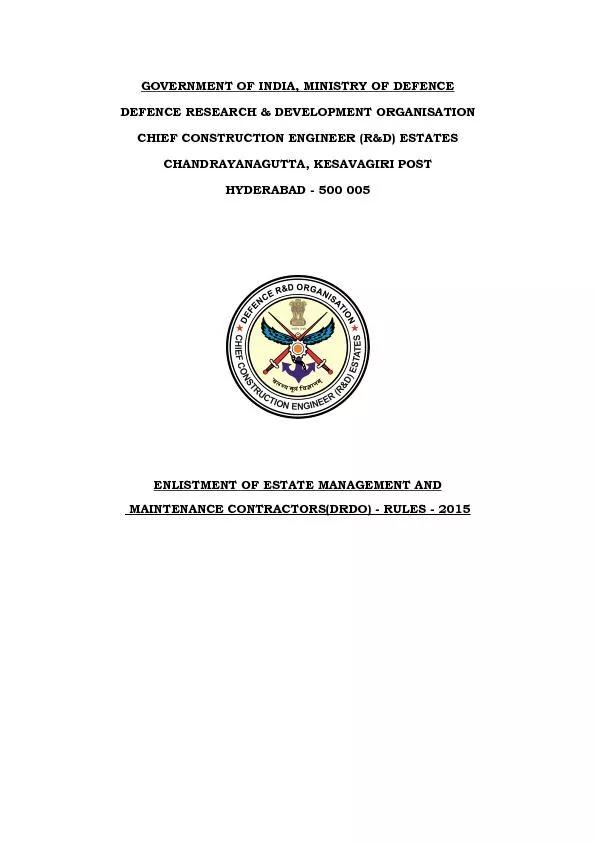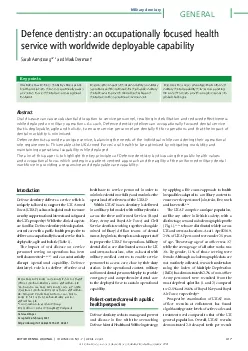PDF-Ministry of Defence
Author : blanko | Published Date : 2022-09-20
Synopsis of Causation Validator Mr Wagih Aclimandos Kings College Hospital Denmark Hill London Disclaimer This synopsis has been completed by medical practitioners
Presentation Embed Code
Download Presentation
Download Presentation The PPT/PDF document "Ministry of Defence" is the property of its rightful owner. Permission is granted to download and print the materials on this website for personal, non-commercial use only, and to display it on your personal computer provided you do not modify the materials and that you retain all copyright notices contained in the materials. By downloading content from our website, you accept the terms of this agreement.
Ministry of Defence: Transcript
Download Rules Of Document
"Ministry of Defence"The content belongs to its owner. You may download and print it for personal use, without modification, and keep all copyright notices. By downloading, you agree to these terms.
Related Documents














